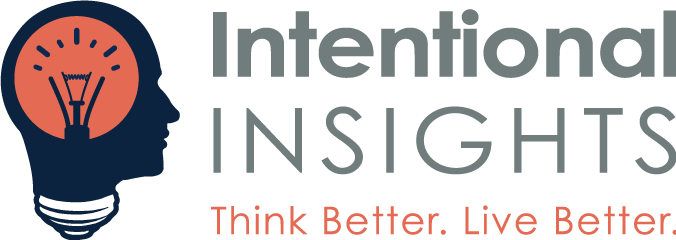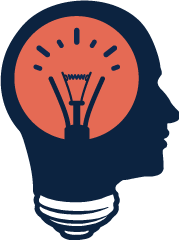
The rise of Generative AI is reshaping the media landscape, as emblematized in the lawsuit by The New York Times against Open AI. Yet such opposition isn’t the only way to handle the threat of Generative AI in the media, as revealed in my conversation with Jill Koziol, Co-Founder of Motherly. Motherly, a digital platform empowering tens of millions of women monthly, grapples with the challenges and opportunities AI presents. The platform’s dual engagement with AI—as a tool for innovation and a threat to content integrity—is emblematic of the broader challenges facing the media industry today.
AI as a Disruptor of Intellectual Property
AI’s role in content scraping represents a significant threat to intellectual property. AI can effortlessly replicate and distribute content, often without proper attribution or respect for copyright laws. This presents a dire challenge: how to protect the hard-earned intellectual property that is the backbone of expert-driven platforms.
Motherly’s response—a free registration wall around their expert parenting content—is both innovative and indicative of a broader trend. By implementing this strategy, they’re not just shielding their content; they’re elevating its value. This approach underscores the importance of verified, trustworthy content, especially in an age where misinformation can rapidly spread. It sets a precedent, signaling that quality content deserves protection and recognition.
The influence of AI on consumer information consumption habits marks a significant shift in the media landscape. In our current era, characterized by an overabundance of information, the ability of audiences to discern credible content is ever more crucial. AI complicates this process by introducing an array of content sources, some reliable and others not so much.
This shift requires a robust response from publishers and content creators. They must find a balance between harnessing AI for broader reach and engagement while maintaining the integrity and credibility of their content. It’s a complex dance of leveraging advanced technology to enhance content delivery and engagement, without compromising on the authenticity and reliability that is the hallmark of expert-driven platforms.
Harnessing AI for Enhanced User Engagement
The strategic vision of Koziol for Motherly demonstrates a proactive and forward-thinking approach to AI, transcending mere defensive tactics. Their adoption of AI, particularly through their AI-powered parenting coach, Quin, is a prime example of how technology can be harnessed to not only enhance user engagement but also to personalize the user experience in unprecedented ways.
Quin, developed in collaboration with Verneek, is more than just an AI tool; it’s a groundbreaking approach to user interaction and engagement. By drawing from Motherly’s extensive library of expert articles, Quin offers personalized advice and support to its users, all in Motherly’s approachable voice and tone. This level of customization is significant. It signifies a shift from generic, one-size-fits-all content to a more tailored experience, addressing the specific concerns and questions of individual users.
The implementation of Quin is a strategic move that aligns with the evolving expectations of digital consumers. In today’s digital landscape, users seek content that resonates with their unique experiences and challenges. Quin meets this need by providing targeted, reliable information, including relevant product recommendations, thereby enhancing the overall user experience on the Motherly platform.
The integration of AI in Motherly’s strategy also reflects a broader trend in media – the use of AI for more efficient content creation and curation. AI tools like Quin don’t just automate processes; they provide insights that can inform content strategy, helping to identify trending topics, user preferences, and gaps in existing content. This ability to analyze and respond to user data in real-time allows platforms like Motherly to remain relevant and responsive to their audience’s evolving needs.
Moreover, AI’s role in content creation is not just about efficiency; it’s about maintaining quality while adhering to brand guidelines. AI can assist in ensuring content consistency, aligning with the tone, style, and values of the brand. This synergy between AI capabilities and brand integrity is crucial in building trust and loyalty among users.
Perhaps the most significant aspect of Motherly’s use of AI is its focus on understanding and addressing the unique needs of their audience segment – in this case, mothers. By leveraging AI, Motherly can provide content and resources that are specifically tailored to the stages and challenges of motherhood. This level of personalization fosters a deeper connection between the platform and its users, making the content more relevant and valuable.
The AI-driven approach to user engagement taken by Motherly is indicative of a larger shift in the media industry. It’s a shift towards a more user-centric model, where the focus is on delivering not just content, but value, relevance, and personalization. As technology continues to evolve, the ability to understand and cater to the specific needs of distinct audience segments will become increasingly vital for the success and sustainability of digital platforms.
AI and Motherhood: Beyond Media
Koziol not only highlights the transformative role of AI in the media landscape, but also illuminates the impact of AI on motherhood. This intersection of technology and parenting presents both remarkable opportunities and significant challenges.
In a world where the majority of mothers experience burnout, AI emerges as a potentially valuable ally. The daily demands of parenting, compounded by professional responsibilities and personal aspirations, create a perfect storm for stress and fatigue. AI, with its capacity for efficiency and personalization, offers a pathway to ease some of these burdens.
Imagine AI-powered tools that can provide personalized parenting advice, shopping recommendations, schedule management, or even educational content tailored to the developmental stages of children. These applications of AI could act as virtual assistants, helping mothers manage the juggling act of modern parenthood. By automating routine tasks and providing on-demand support, AI can give mothers some much-needed breathing space.
However, as Koziol astutely observes, AI is not a magic bullet. The challenges faced by mothers are deeply rooted in societal structures and cultural norms. Issues like the lack of affordable childcare, the gender pay gap, and societal expectations around motherhood cannot be solved by technology alone. While AI can provide practical support, addressing these foundational issues requires systemic change.
This recognition does not diminish the value of AI; rather, it frames AI as part of a larger solution. Technology, policy, and cultural shifts must work in tandem to create a more supportive environment for mothers. AI can be a catalyst for change, raising awareness and offering innovative solutions, but it must be complemented by broader societal efforts.
As we look to the future, the role of AI in motherhood and media is laden with ethical considerations. Issues like data privacy, algorithmic bias, and the digital divide come into play, especially when AI is used in personal and sensitive areas like parenting. Ensuring that AI systems are ethical, equitable, and transparent is crucial.
Koziol’s optimism suggests a future where AI can significantly contribute to the well-being of mothers. This future envisions AI not just as a technological tool, but as a part of a holistic approach to supporting and empowering mothers. It’s about leveraging technology to enhance the quality of life, while also pushing for societal changes that address the root causes of the challenges faced by mothers.
AI and Motherhood: Navigating Cognitive Biases
In discussing the impact of AI on motherhood and media, it’s crucial to consider the influence of cognitive biases. Two biases, in particular, stand out in this context: optimism bias and empathy gap.
Optimism bias, the tendency to believe that we are less likely to experience negative outcomes compared to others, plays a significant role in how we perceive AI’s potential in easing the burdens of motherhood. Mothers and industry professionals alike might fall prey to this bias, overestimating the positive impact of AI and underestimating its limitations or potential risks.
For instance, while AI can offer personalized parenting advice or efficient scheduling, optimism bias might lead one to overlook issues such as data privacy concerns or the impersonal nature of AI interactions, and even the serious threat of AI existential risks, where humanity loses control over its destiny, including with the possibility of AI wiping us out. Believing overly in AI’s positive potential might also cause mothers and decision-makers in the media to undervalue the importance of human elements in parenting support, like empathy and understanding, which AI cannot replicate.
The empathy gap, the tendency to underestimate the influences of emotional states on behavior and preferences, is particularly relevant when considering AI’s role in motherhood. Developers and implementers of AI solutions might not fully grasp the emotional complexities of motherhood, leading to solutions that are technically sound but emotionally inadequate.
For example, an AI tool designed without considering the empathy gap might provide efficient responses to a mother’s queries about child-rearing but fail to offer the emotional support or understanding that a human advisor could. This gap in understanding can lead to AI solutions that, while efficient, lack the warmth and empathy essential in parenting support.
The interplay of optimism bias and empathy gap highlights the necessity of a balanced approach in leveraging AI for motherhood. While optimism about AI’s potential drives innovation, it’s crucial to temper this with realistic assessments of AI’s limitations. Similarly, recognizing the empathy gap can lead to more emotionally intelligent AI solutions that better meet the needs of mothers.
Conclusion
My discussion with Koziol underscores a pivotal moment in the media landscape. As AI continues to evolve, it challenges us to rethink how we create, protect, and consume content. For expert-driven platforms like Motherly, it’s a journey of adaptation and innovation. By embracing AI’s capabilities while safeguarding their content’s integrity, they’re setting a precedent for the media industry. In this era of rapid technological advancement, one thing is clear: AI is not just reshaping media; it’s redefining the very essence of expert-based content creation and consumption. As we navigate these uncharted waters, our ability to leverage AI responsibly and creatively will dictate the future of media and, by extension, our society.
Key Take-Away
The proliferation of AI-generated content highlights the need for publishers to maintain content credibility and authenticity in an era of information overload…>Click to tweet
Image credit: Kaboompics.com/pexels
Originally published in Disaster Avoidance Experts




